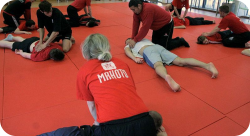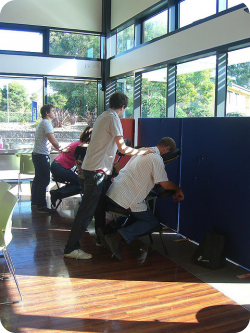Massage Therapy regulations in North America. Rules, laws and Organisations regulating Massage Therapy.
Massage Therapy Regulation
In the United States there are about 90,000 massage therapists. Massage training programs in the US are typically 500–1000 hours in length, and can award a certificate, diploma, or degree depending on the particular school. There are around 1,300 programs training massage therapists in the country and sthe curricilum includes anatomy and physiology, kinesiology, massage techniques, first aid and CPR, business, ethical and legal issues, hands on practice, and continuing education requirements if regulated. The Commission on Massage Therapy Accreditation (COMTA) is one of the organizations that works with massage schools in the U.S. Thirty-nine states, the District of Columbia and four Canadian provinces currently offer some type of credential to professionals in the massage and bodywork field – usually licensure, certification or registration. Thirty-eight states and the District of Columbia require some type of licensing for massage therapists. In the US, 32 states use the National Certification Board for Therapeutic Massage and Bodywork’s certification program as a basis for granting licenses either by rule or statute. The National Board grants the designation Nationally Certified in Therapeutic Massage and Bodywork (NCTMB). There are two tests available and one can become certified through a portfolio process with equivalent training and experience. Between 10% and 20% of towns or counties regulate the profession. These local regulations can range from prohibition on opposite sex massage, fingerprinting and venereal checks from a doctor, to prohibition on house calls because of concern regarding sale of sexual services.
In the US, licensure is the highest level of regulation and this restricts anyone without a license from practicing massage therapy or by calling themselves that protected title.  Certification allows only those who meet certain educational criteria to use the protected title and registration only requires a listing of therapists who apply and meet an educational requirement.
Certification allows only those who meet certain educational criteria to use the protected title and registration only requires a listing of therapists who apply and meet an educational requirement.
In late 2007, the Federation of State Massage Therapy Boards launched a new certification exam titled the MBLEx. Approximately 13 states have accepted this certification exam.
In Canada only three provinces regulate massage therapy: British Columbia, Ontario, and Newfoundland and Labrador. The Canadian Massage Therapists Alliance (CMTA) has set a level of 2200 practice hours in Ontario, and Newfoundland and Labrador and 3000 hours in British Columbia, which has the highest education standard in North America.
You can finf more information about a career in Massage Therapy in Canada here: Massage Regulation and massage associations in Canada
Because the art and science of massage is a globally diverse phenomenon, different legal jurisdictions sometimes recognize and license individuals with titles. Examples are:
- Registered Massage Therapist (RMT) Canada
- Certified Massage Therapist (CMT)
- Licensed Massage Practitioner (LMP)
- Licensed Massage Therapist (LMT)
- Licensed Massage and Bodywork Therapist (LMBT) North Carolina
Picture by Dokiai Aikido from Ljubljana, Slovenia (massage) CC-BY-SA-2.0, via Wikimedia Commons
